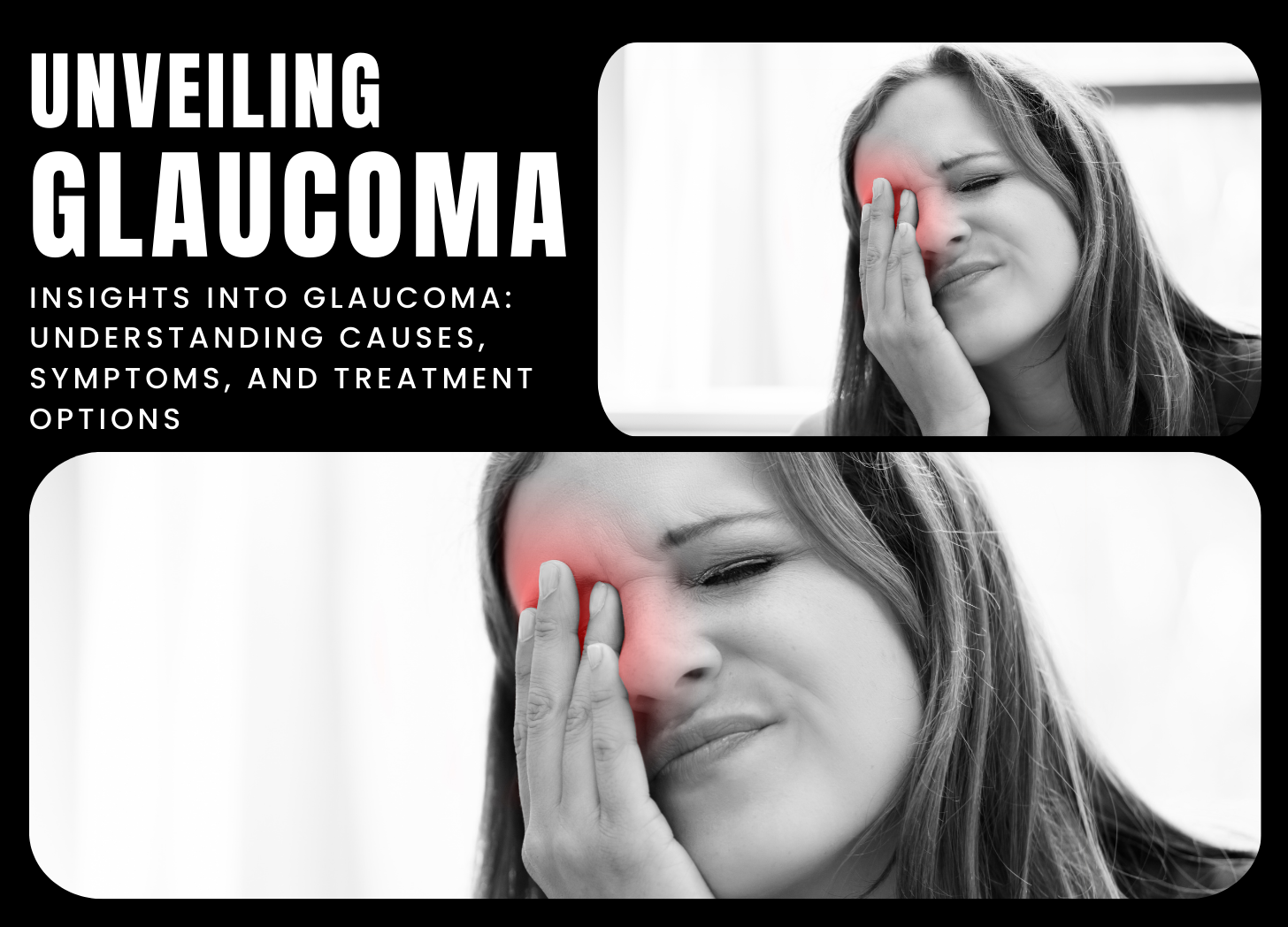Contact Us
Contact Us

Glaucoma is a collection of eye disorders that damage the optic nerve, causing progressive and irreversible vision loss. It is frequently accompanied with high intraocular pressure (IOP), which can be caused by poor drainage of aqueous humor, the fluid that nourishes the eye. Glaucoma can affect people of any age, but it is more frequent in older persons and those who have a family history of the condition. Glaucoma is classified into various types: primary open-angle glaucoma (POAG), angle-closure glaucoma, normal-tension glaucoma, and secondary glaucoma.
The actual etiology of glaucoma is unknown, however various risk factors can raise the likelihood of acquiring the disease. These include high intraocular pressure, age-related eye changes, a family history of glaucoma, certain medical diseases like diabetes or hypertension, and long-term corticosteroid usage. Glaucoma is commonly referred to as the “silent thief of sight” because it usually grows slowly and without obvious symptoms until considerable vision loss occurs.
Common glaucoma symptoms include gradual loss of peripheral (side) vision, tunnel vision (in advanced stages), halos surrounding lights, blurred vision, eye pain, headache, nausea, or vomiting (in acute angle-closure glaucoma). However, many people with glaucoma may not exhibit any symptoms until the condition has progressed to an advanced stage, emphasizing the significance of regular eye exams for early detection and treatment.
Glaucoma is normally diagnosed with a full eye examination that includes intraocular pressure measurement, optic nerve examination, visual field assessment, and drainage angle evaluation. Additional tests, such as optical coherence tomography (OCT) or gonioscopy, may be conducted to evaluate the structure of the optic nerve and drainage system of the eye.
Glaucoma treatment tries to reduce intraocular pressure, preserve vision, and protect the optic nerve from further damage. Depending on the type and severity of the glaucoma, treatment may include medications (such as eye drops, oral medications, or laser therapy) to lower intraocular pressure, surgical procedures (such as trabeculectomy or shunt implantation) to improve aqueous humor drainage, or minimally invasive procedures (such as selective laser trabeculoplasty or minimally invasive glaucoma surgery) to improve drainage and lower intraocular pressure.
To summarize, glaucoma is a degenerative eye condition defined by damage to the optic nerve, which can lead to vision loss and blindness if not treated. Early detection, regular eye exams, and proper treatment are critical for treating glaucoma and maintaining vision. Individuals can maintain their eye health and decrease the burden of glaucoma by raising awareness about the condition and its risk factors.
References:
1.Mayo Clinic. (2022). Glaucoma. Retrieved from https://www.mayoclinic.org/diseases-conditions/glaucoma/symptoms-causes/syc-20372839
2.National Eye Institute. (2022). Glaucoma. Retrieved from https://www.nei.nih.gov/learn-about-eye-health/eye-conditions-and-diseases/glaucoma
Post a Comment